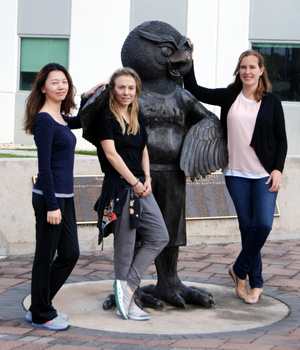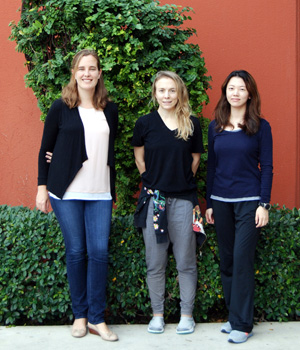

Sheremata, S.L., Shomstein, S. (under review) Task set induces dynamic reallocation of resources in visual short-term memory.
Sheremata, S.L., Silver, M.A. (2015) Hemisphere-dependent attentional modulation of human parietal visual field representations. Journal of Neuroscience 35(2): 508-17. pdf
Sheremata, S.L., Shomstein, S. (2014) Hemifield asymmetries differentiate VSTM for single- and multiple-feature objects. Attention, Perception, & Psychophysics 76(6) 1609-19. pdf
Yoon, J., Sheremata, S.L., Rokem, A., Silver, M.A. (2013) Windows to the soul: Vision science as a tool for studying biological mechanisms of information processing deficits in schizophrenia. Frontiers in Psychopathology 4(681). pdf
Somers, D.C., Sheremata, S.L. (2013) Attention maps in the brain WIREs Cognitive Science: Cognitive Science 4(4) 327-40. pdf
Kong, L., Michalka, S.W., Rosen, M.L., Sheremata, S.L., Swisher, J.D., Shinn-Cunningham, B.S., Somers, D.C. (2012) Auditory spatial attention representations in the human cerebral cortex Cerebral Cortex. pdf
Kosovicheva, A.K., Sheremata, S.L., Rokem, A., Landau, A.N., Silver, M.A. (2012) Cholinergic enhancement reduces orientation-specific surround suppression but not visual crowding Frontiers in Behavioral Neuroscience 6(61). pdf
Sheremata, S.L., Bettencourt, K.C., Somers, D.C. (2010) Hemispheric asymmetry in visuotopic posterior parietal cortex emerges with visual short-term memory load Journal of Neuroscience 30(38):12581-8. pdf
Sheremata, S.L., Sakagami M. (2006) Increasing distractor strength improves accuracy Perceptual and Motor Skills 102(2): 509-516. pdf
Chen, Y., Levy, D.L., Sheremata, S.L., Holzman, P.S. (2006) Bipolar and schizophrenic patients differ in patterns of visual motion discrimination Schizophrenia Research 88(1-3):208-216. pdf
Sheremata, S.L., Chen, Y. (2004) Co-administration of atypical antipsychotics and antidepressants disturbs contrast detection in schizophrenia.Schizophrenia Research 70(1):81-89. pdf
Chen, Y., Levy, D.L., Sheremata, S.L., Holzman, P.S. (2004) Compromised late-stage motion processing in schizophrenia Biological Psychiatry 55(8):834-41. pdf
Chen, Y., Levy, D.L., Sheremata, S.L., Nakayama, K., Matthysse, S., Holzman, P.S. (2003) Effects of typical, atypical, and no antipsychotic drugs on visual contrast detection in schizophrenia. American Journal of Psychiatry 160(10):1795-801. pdf


